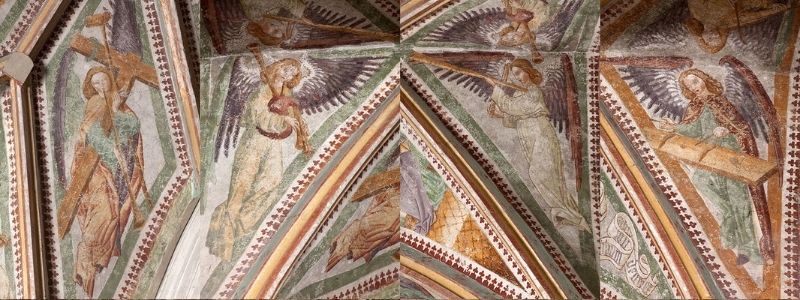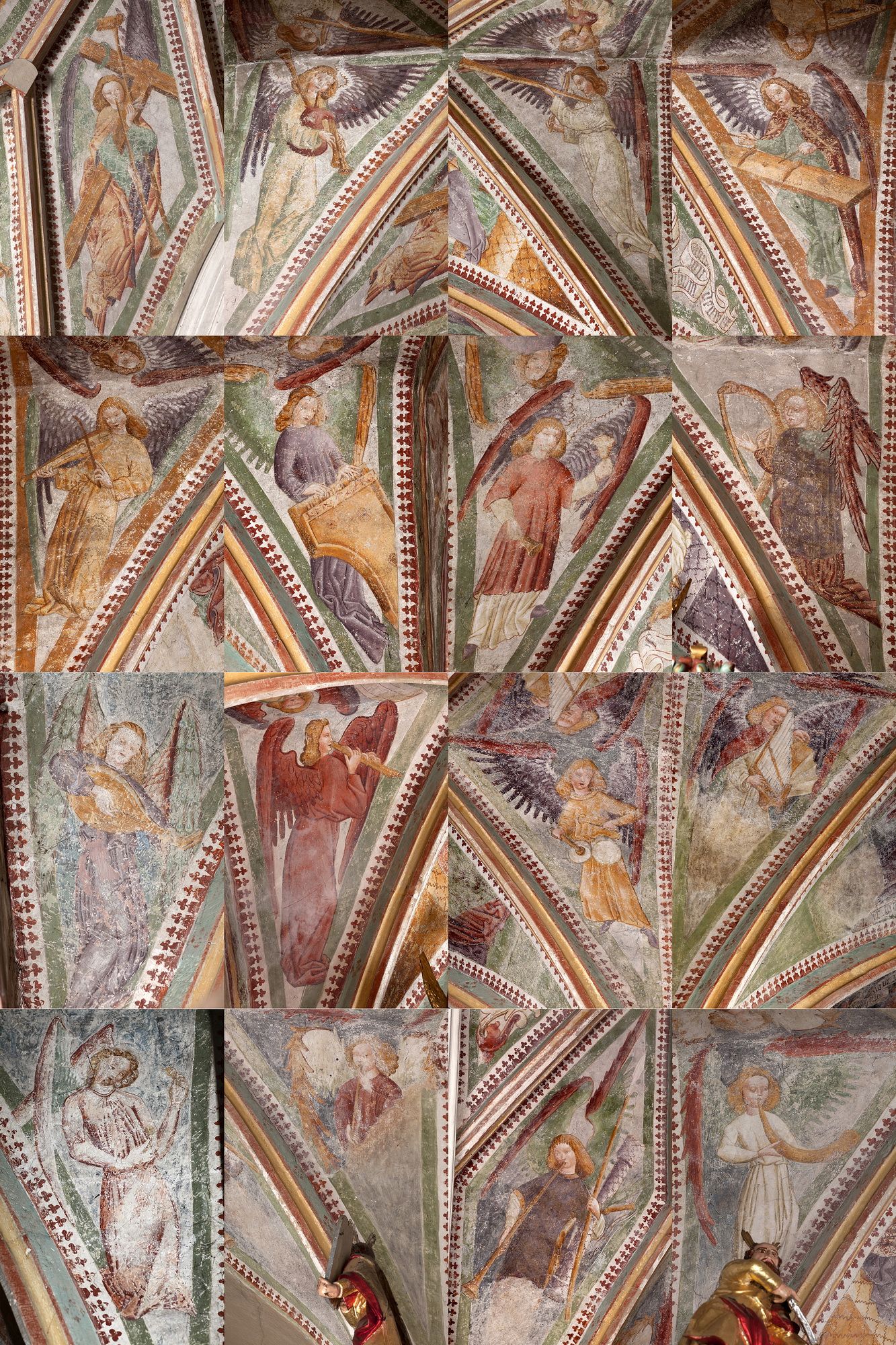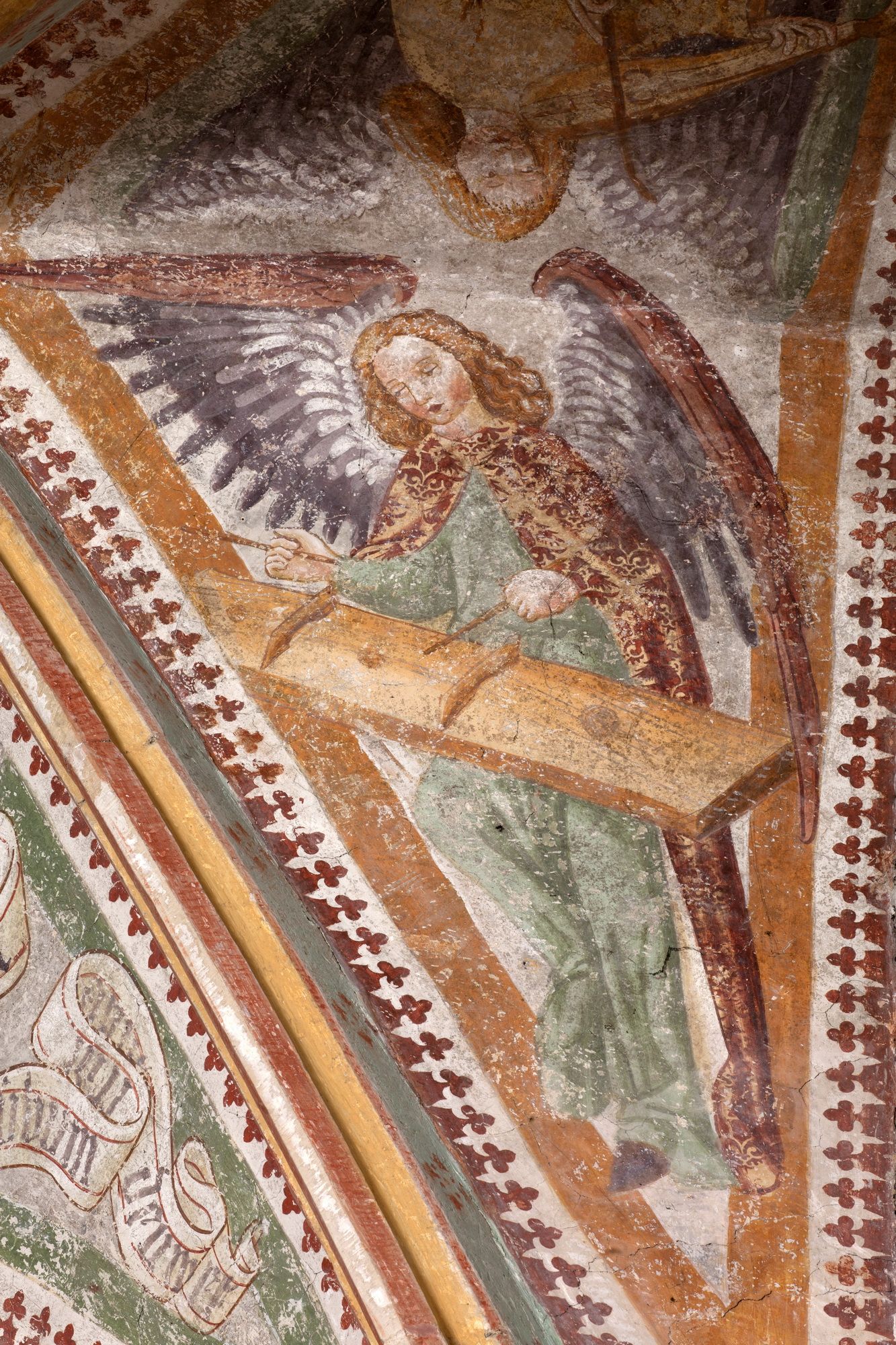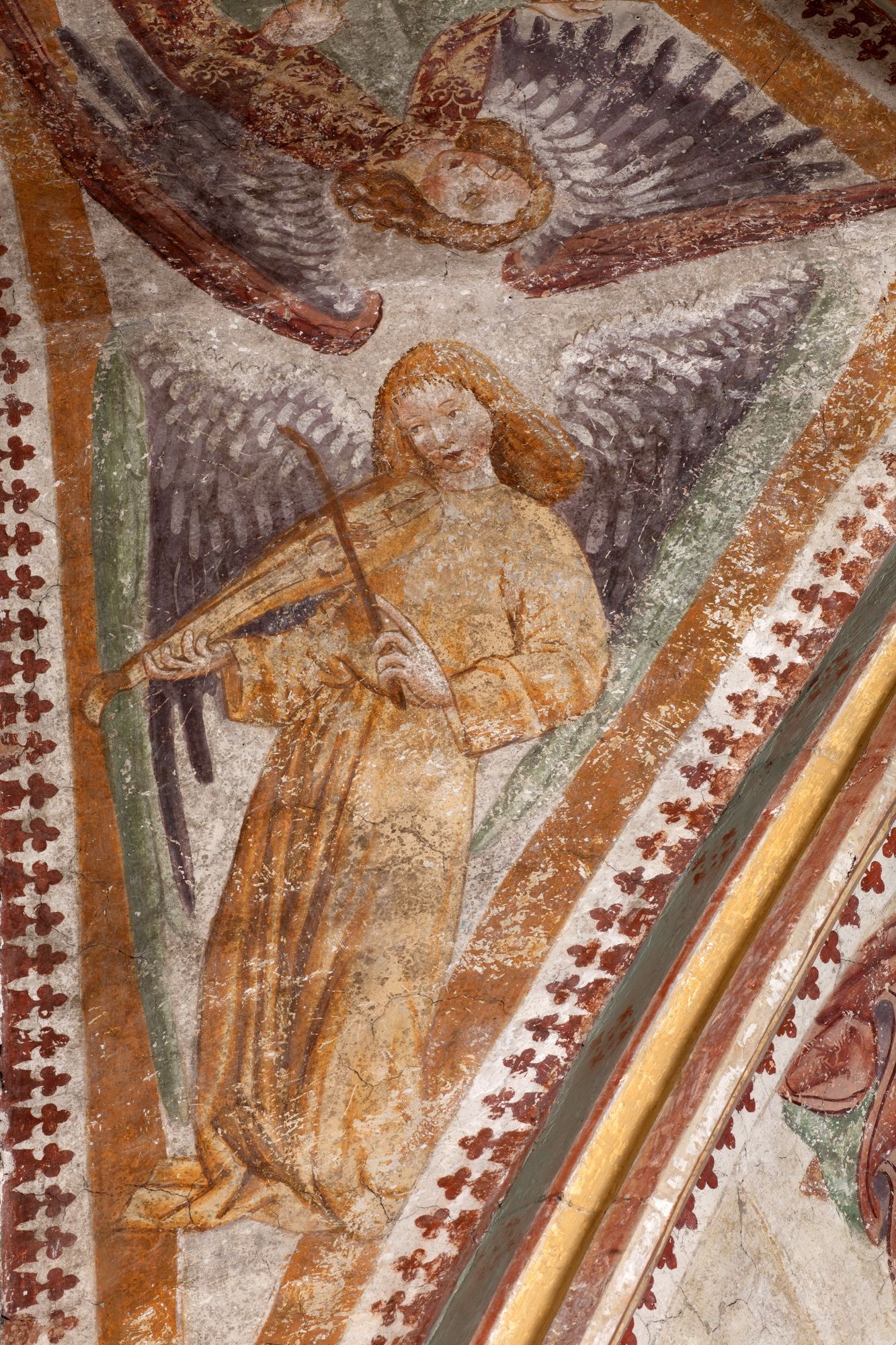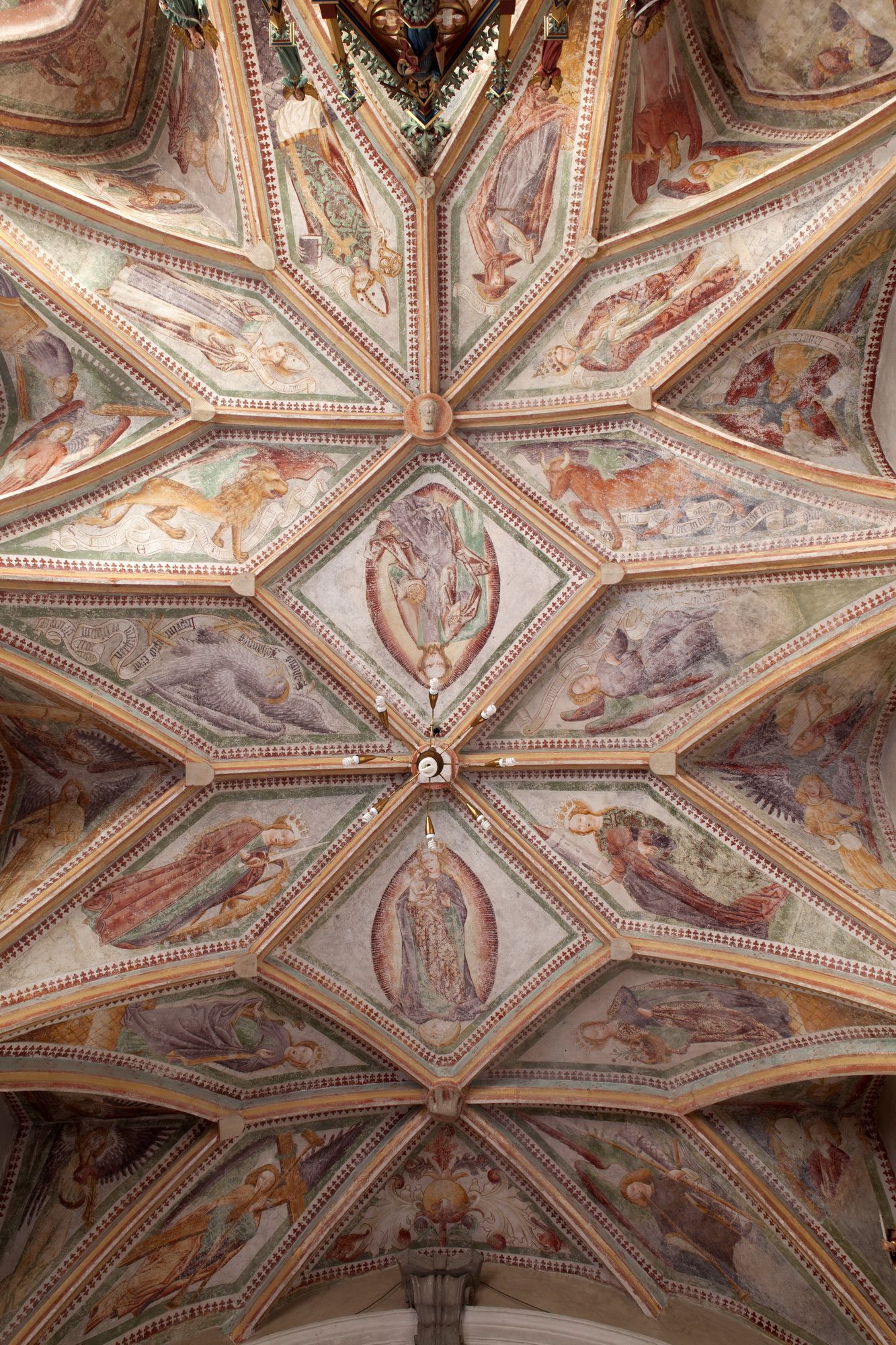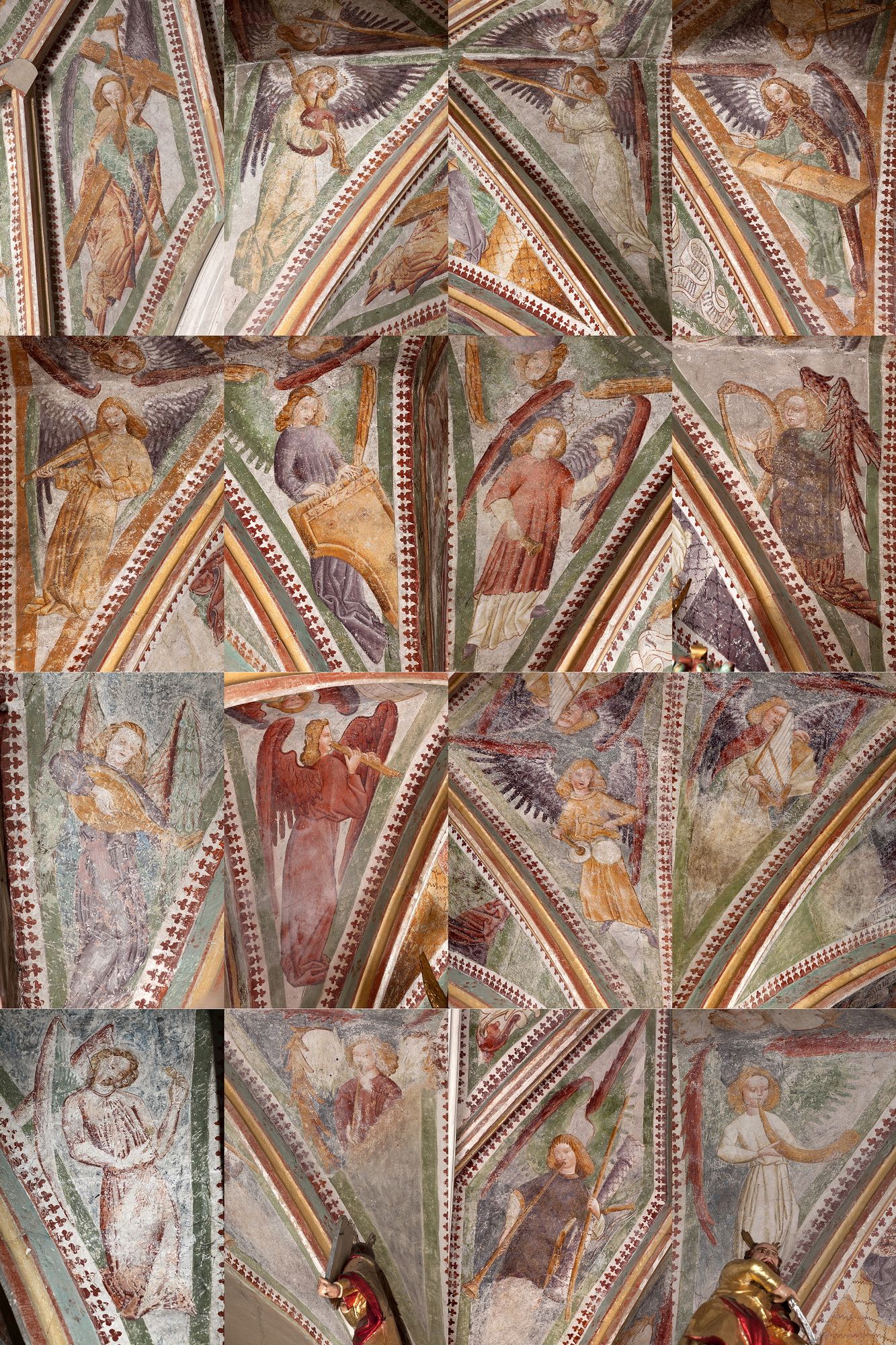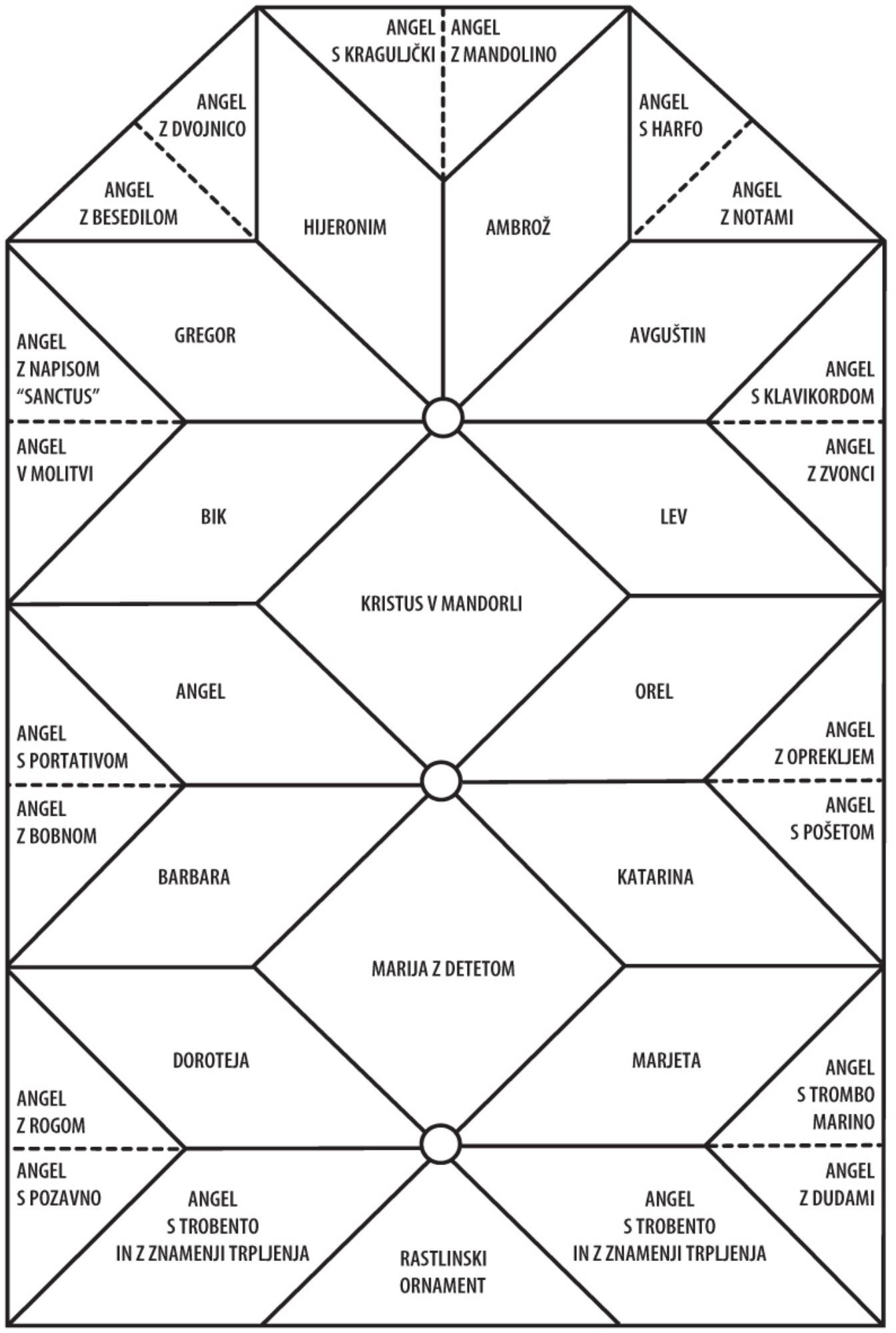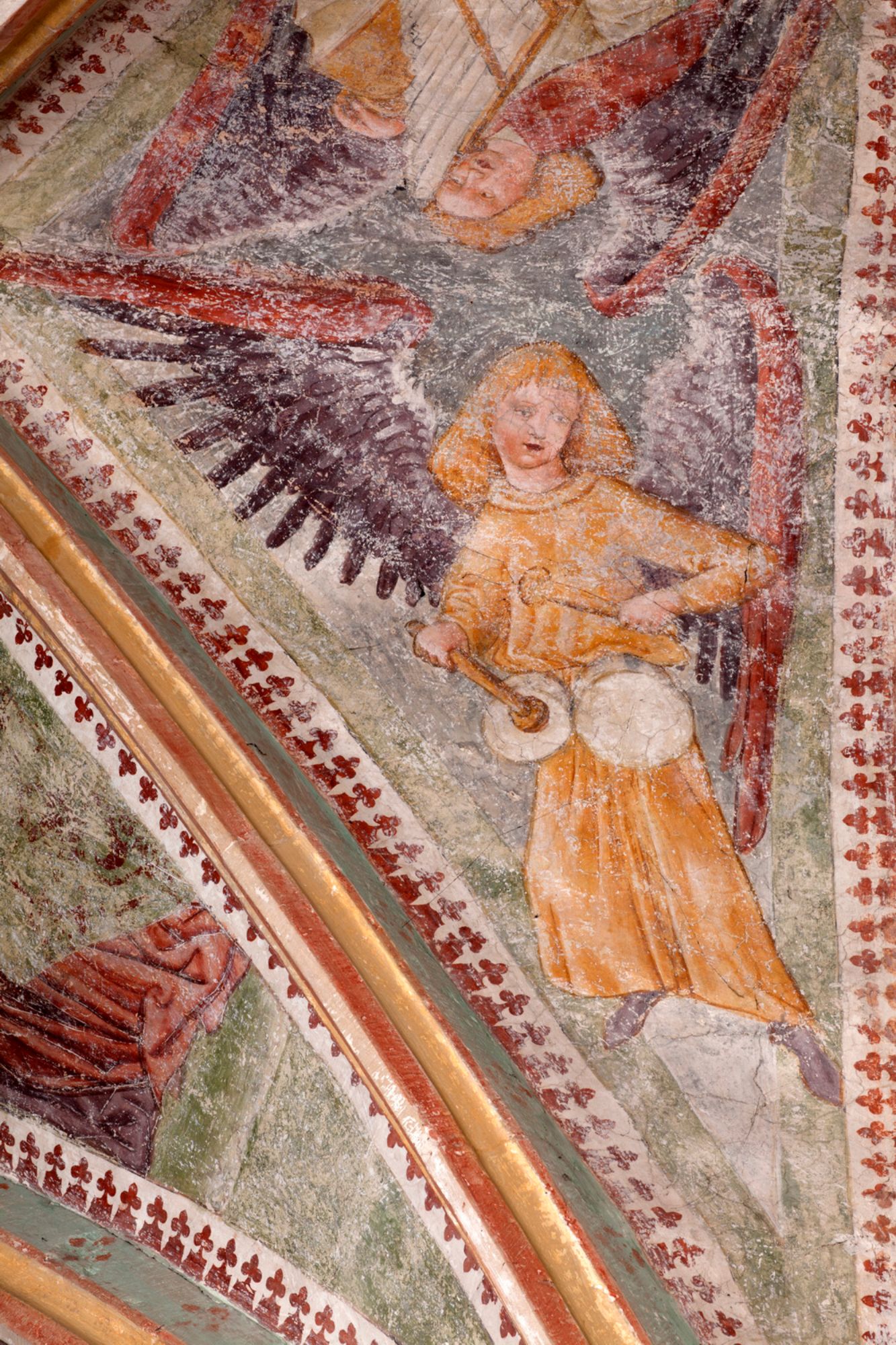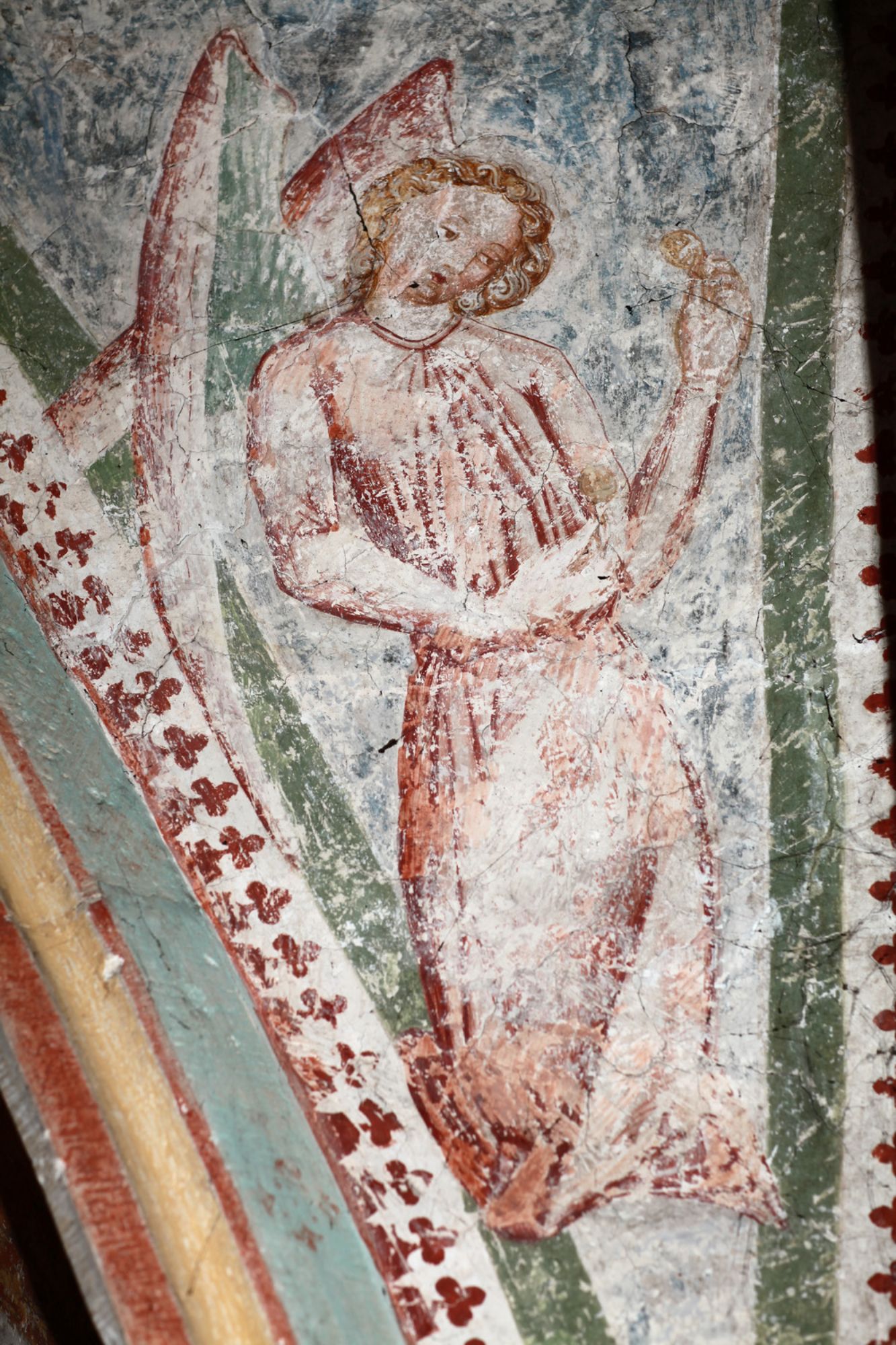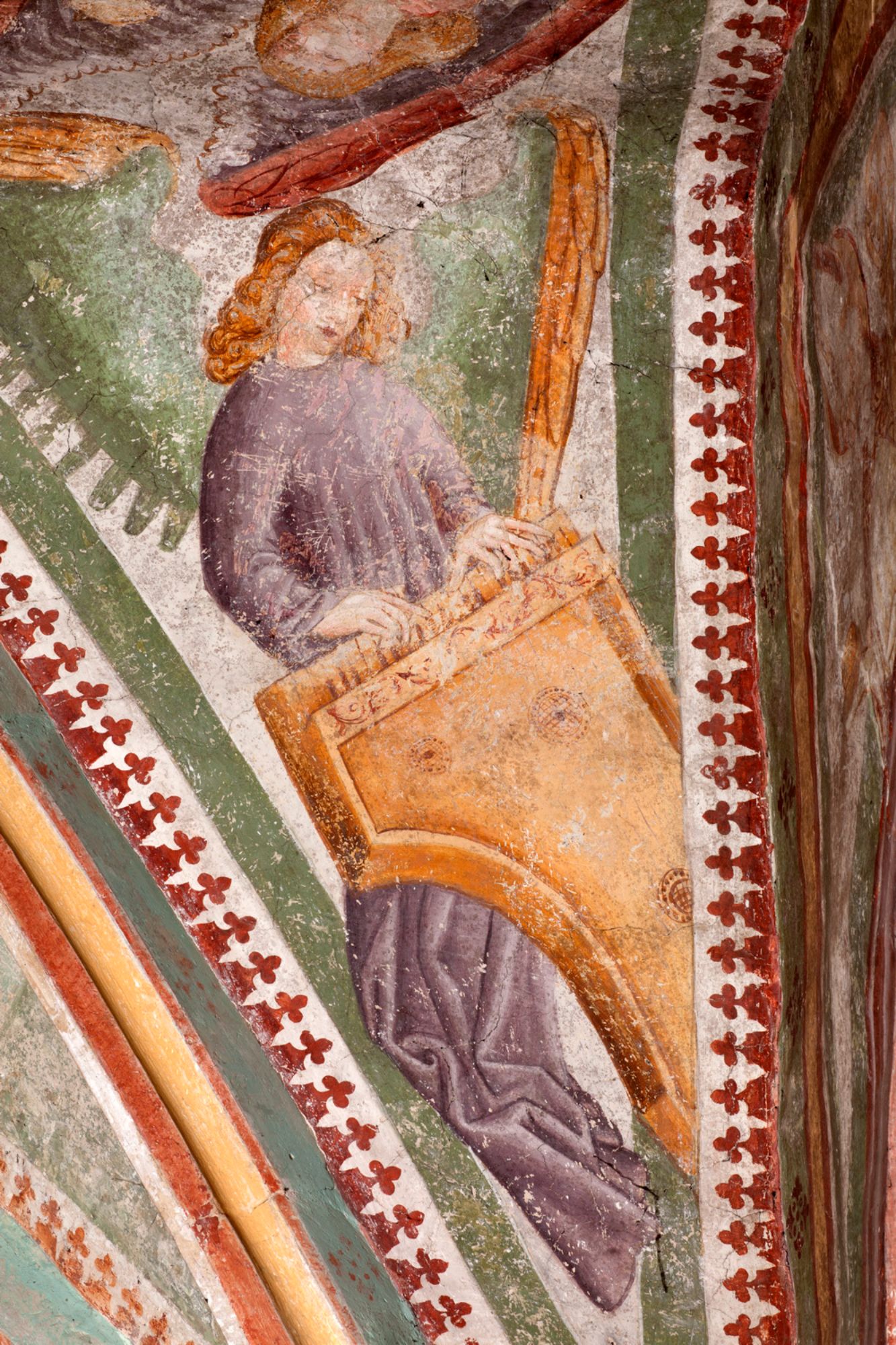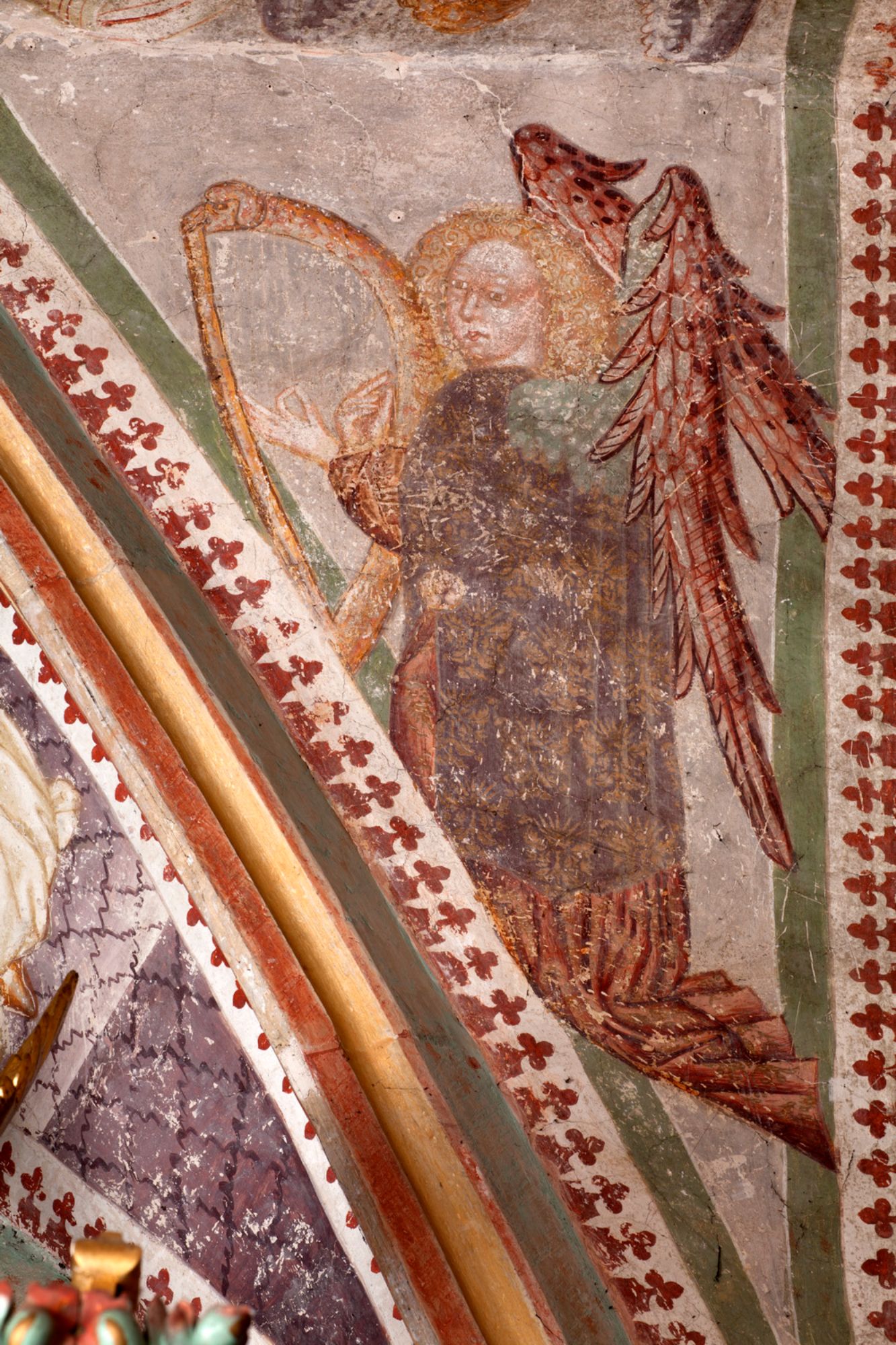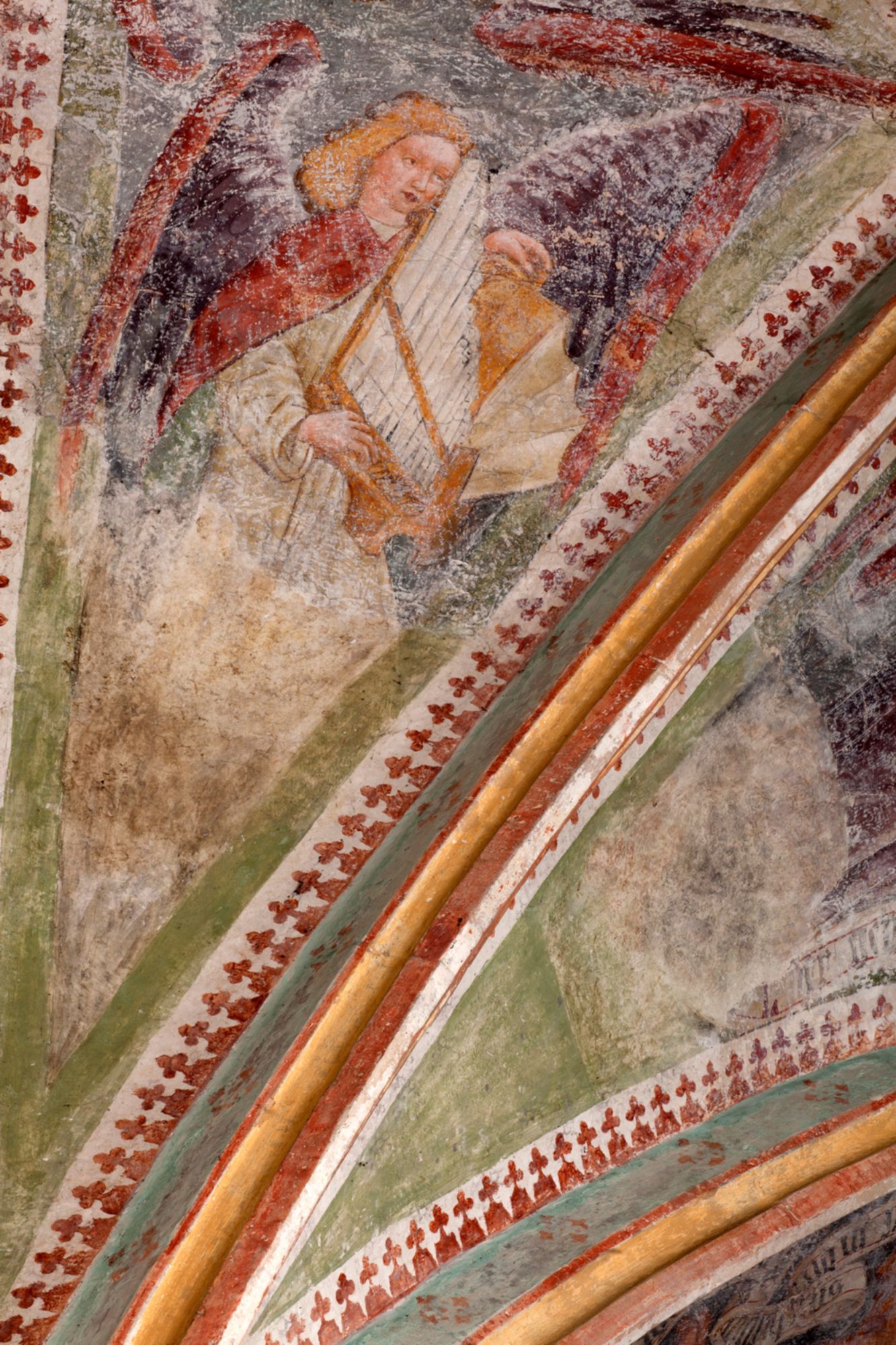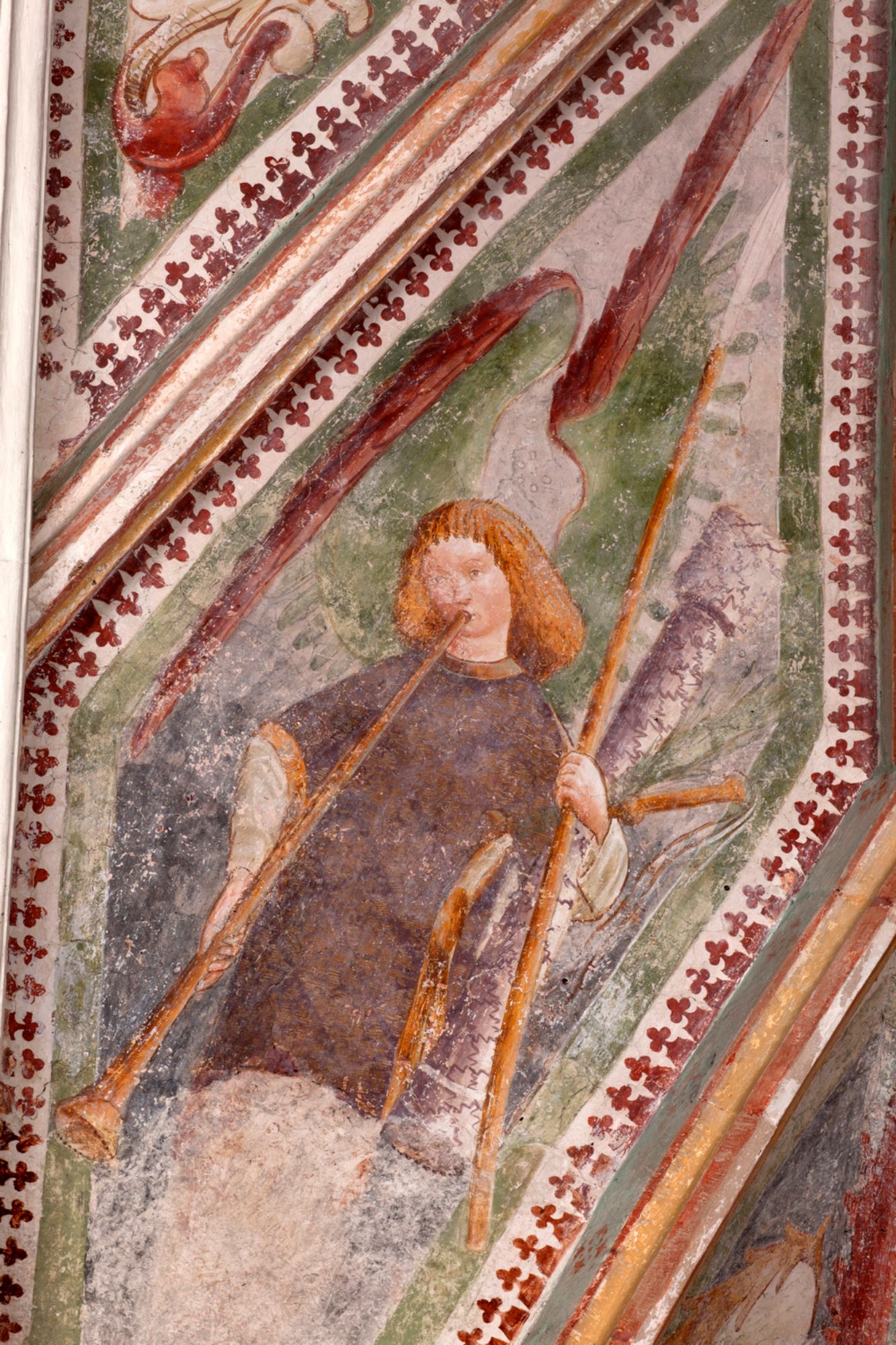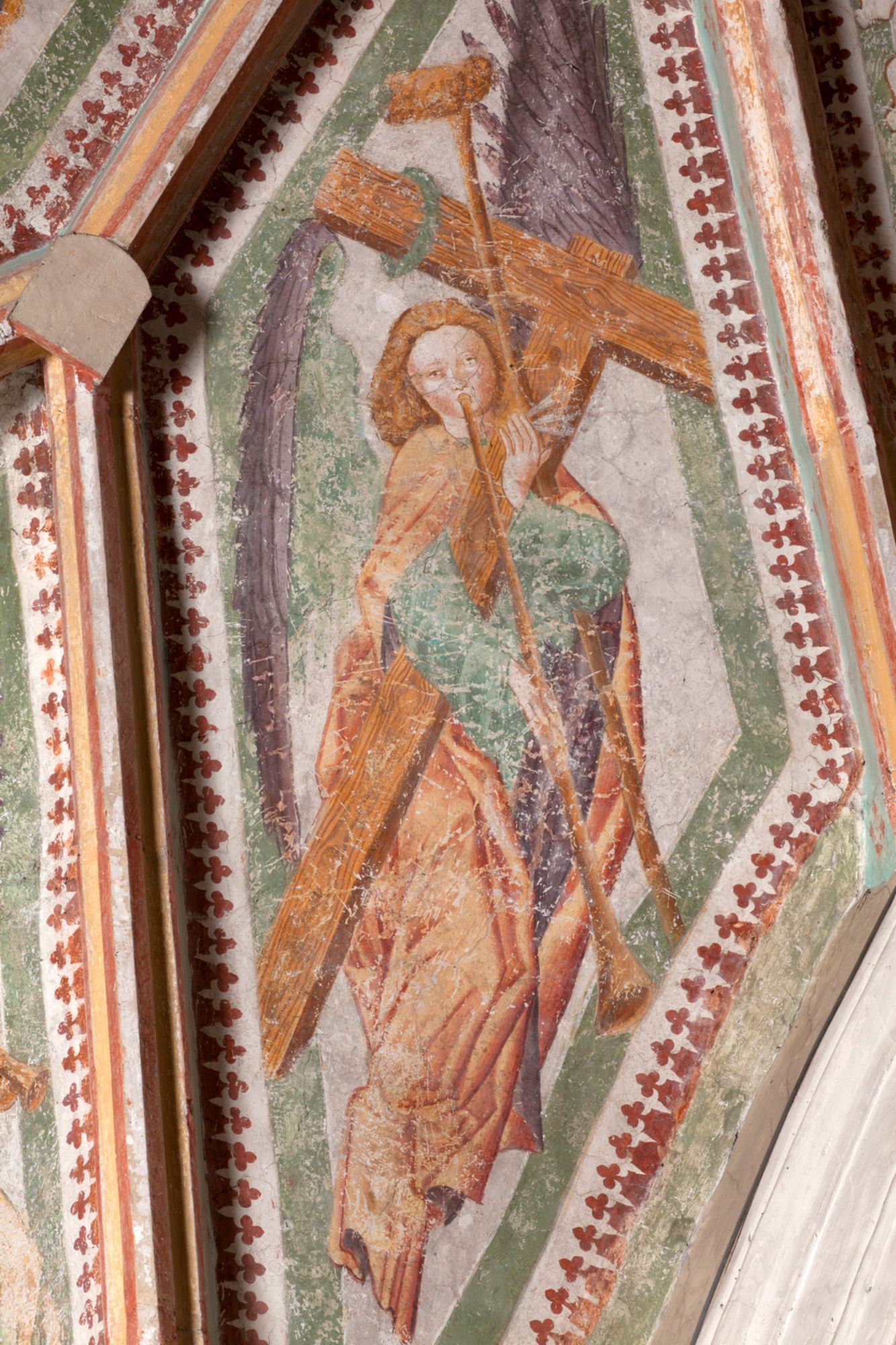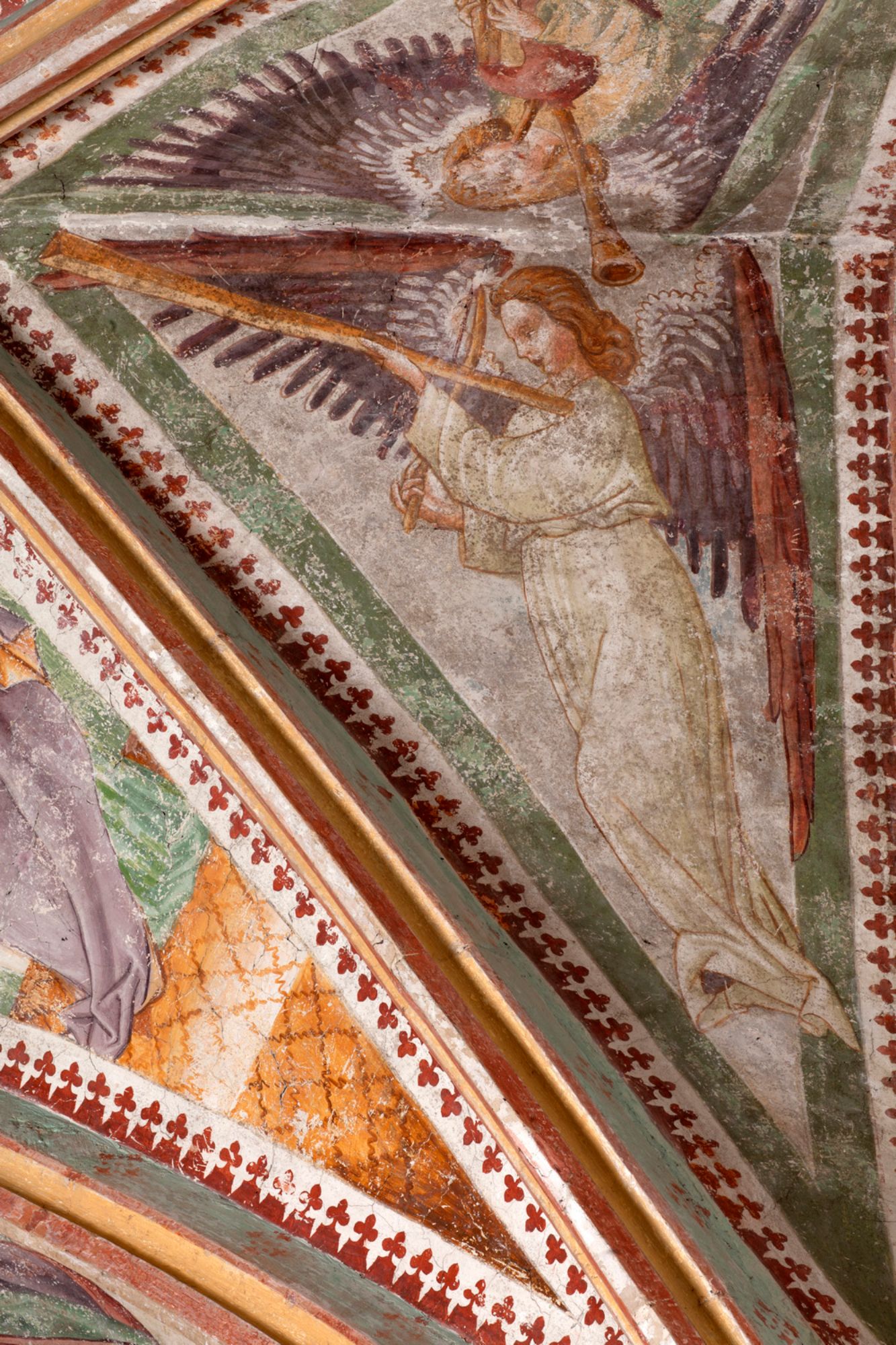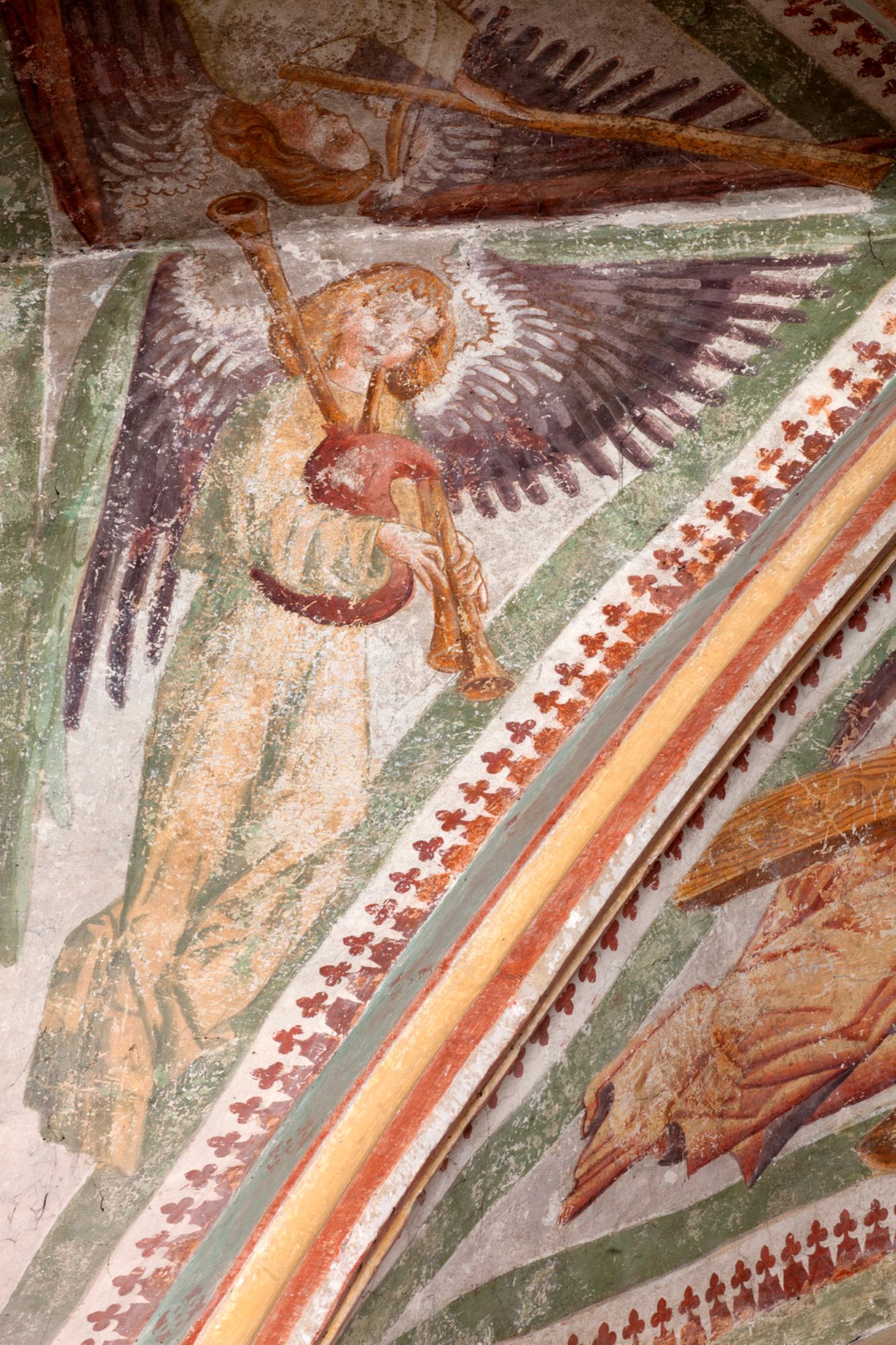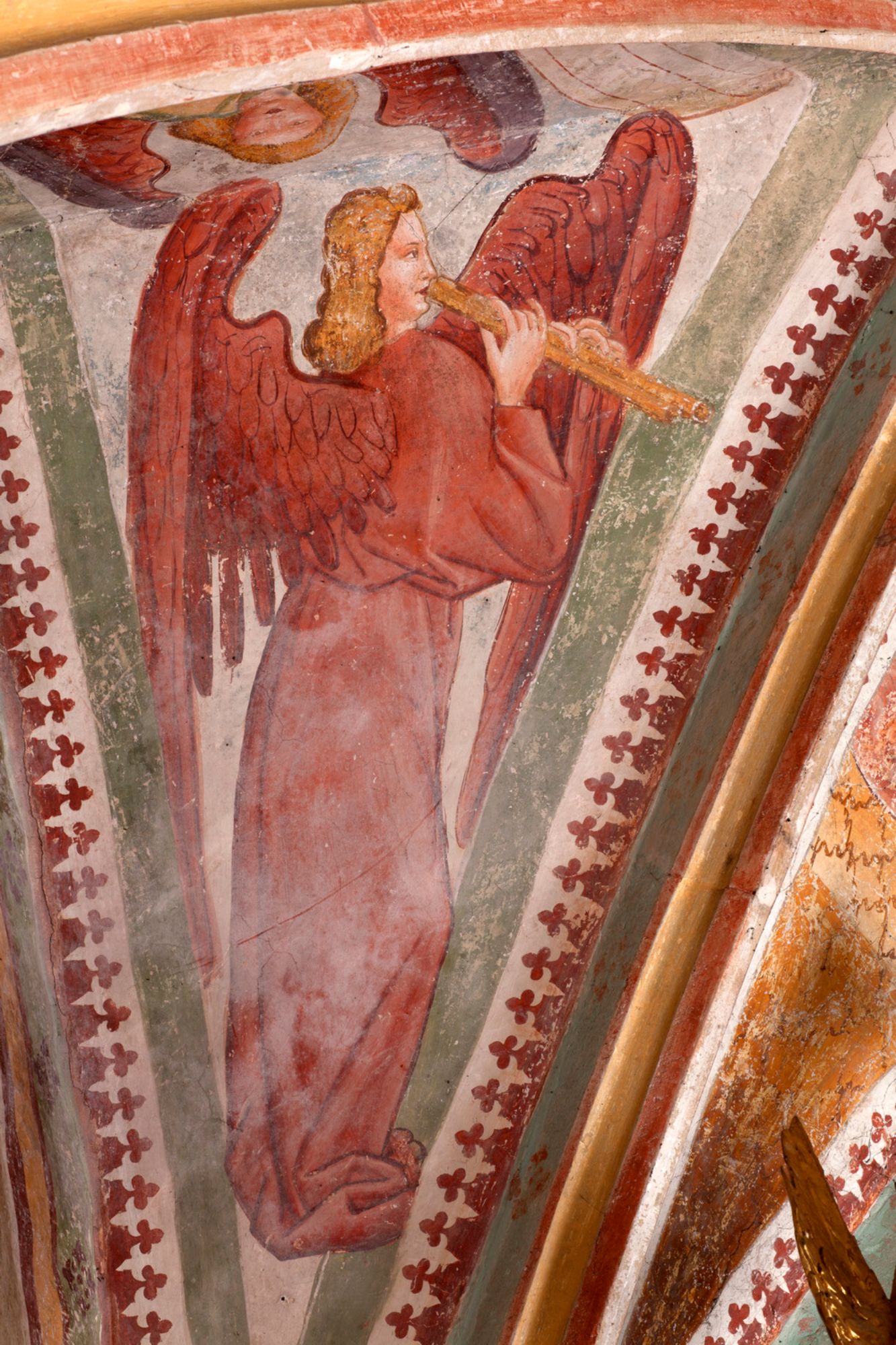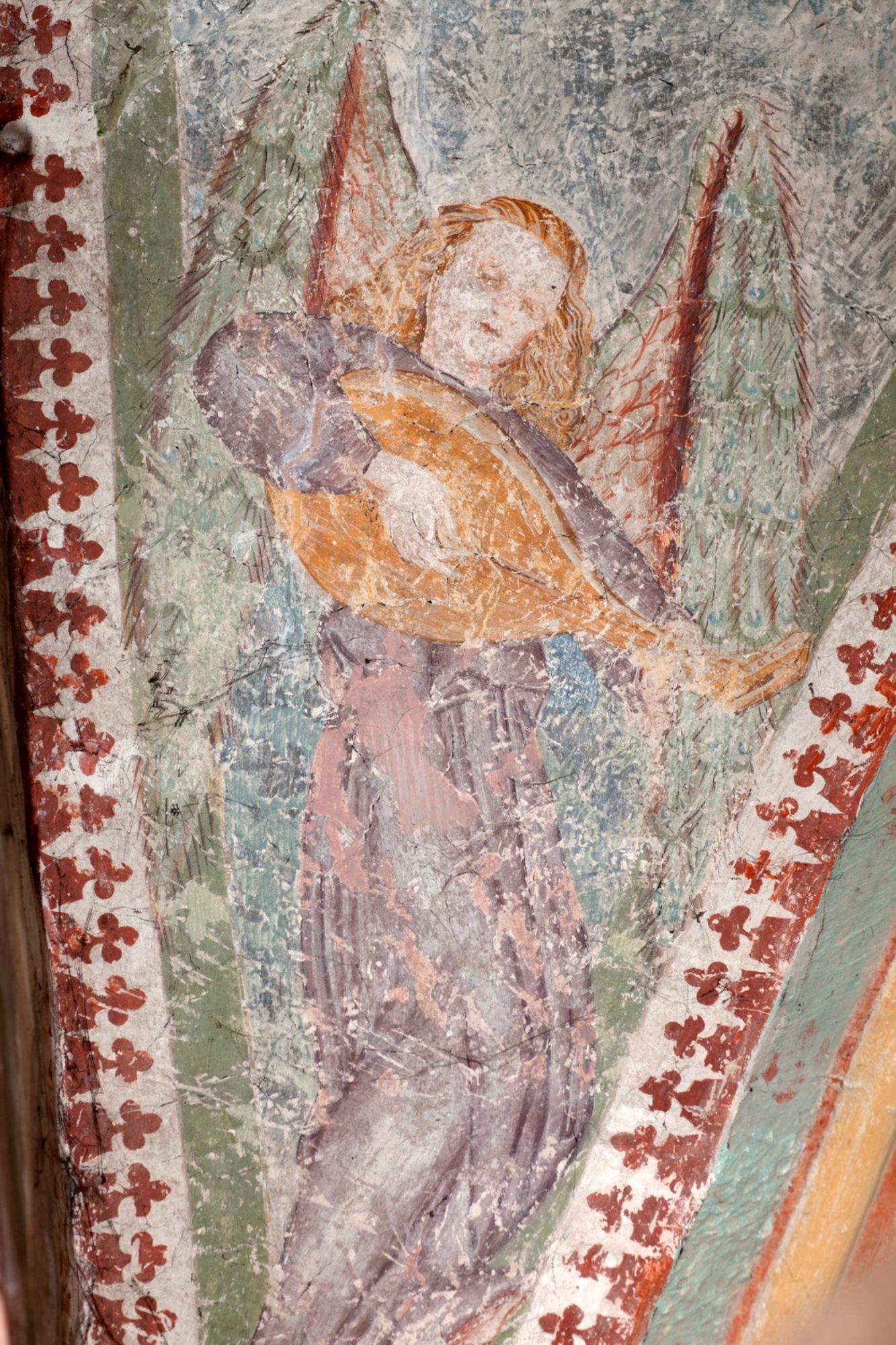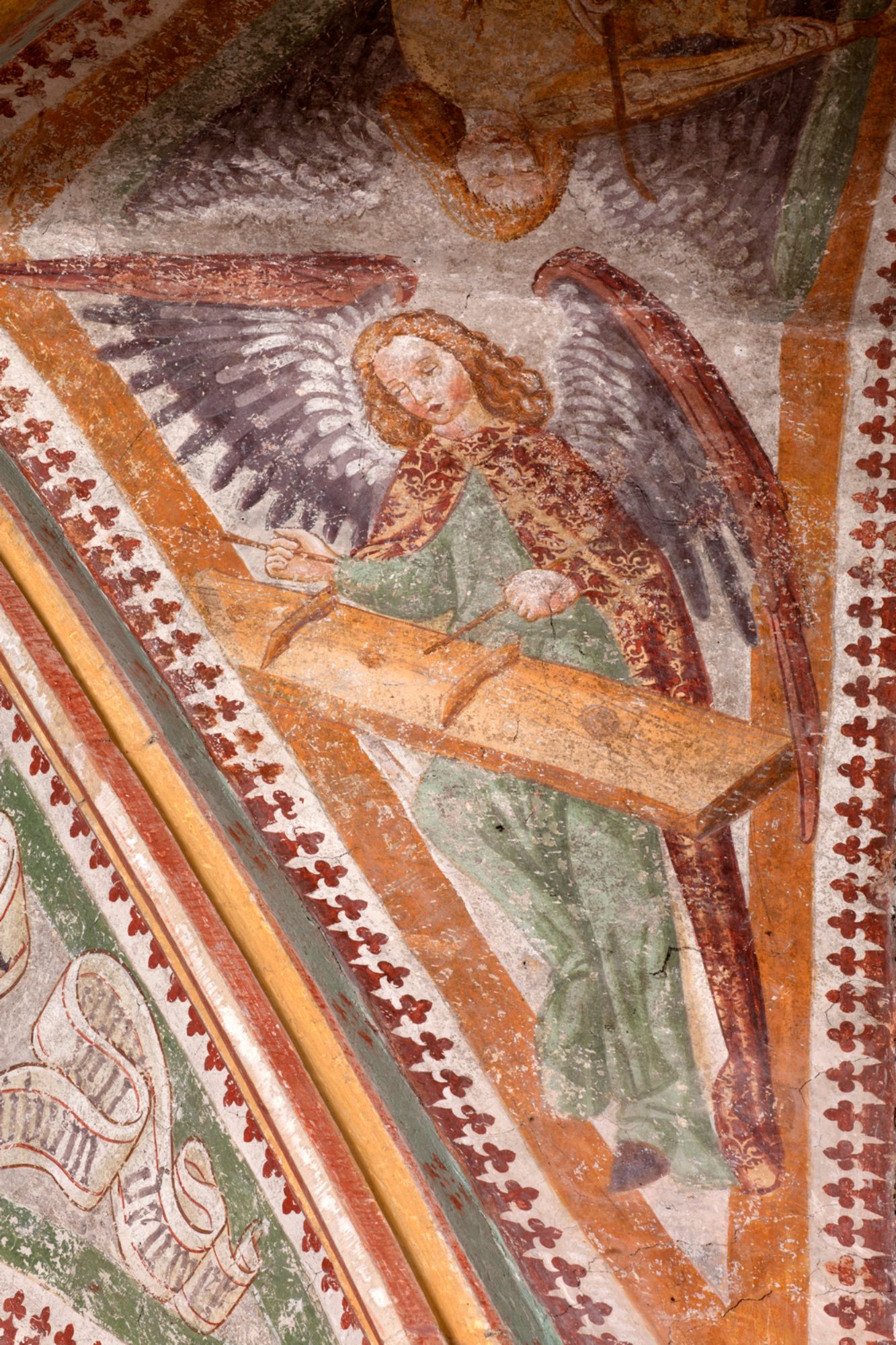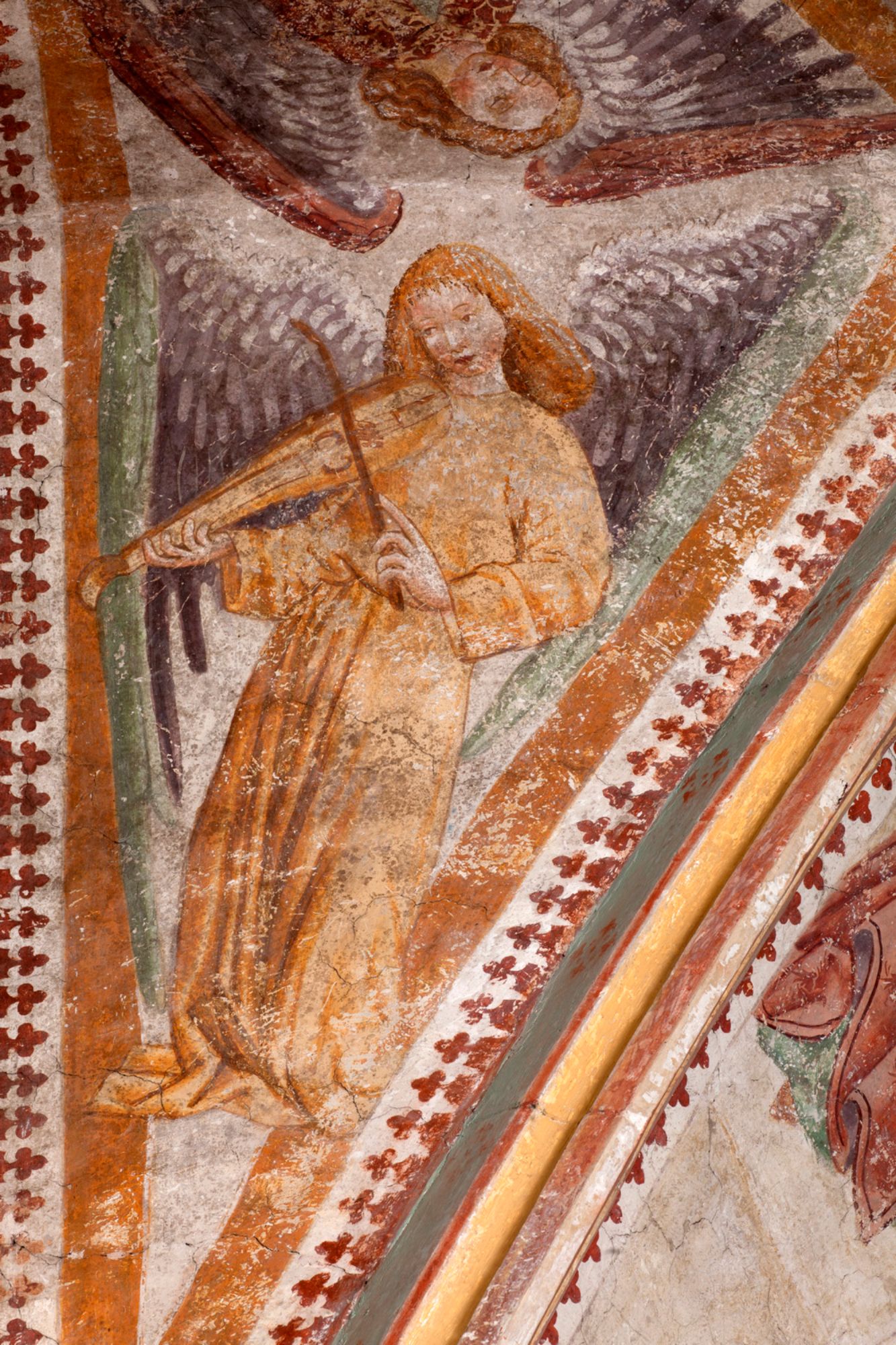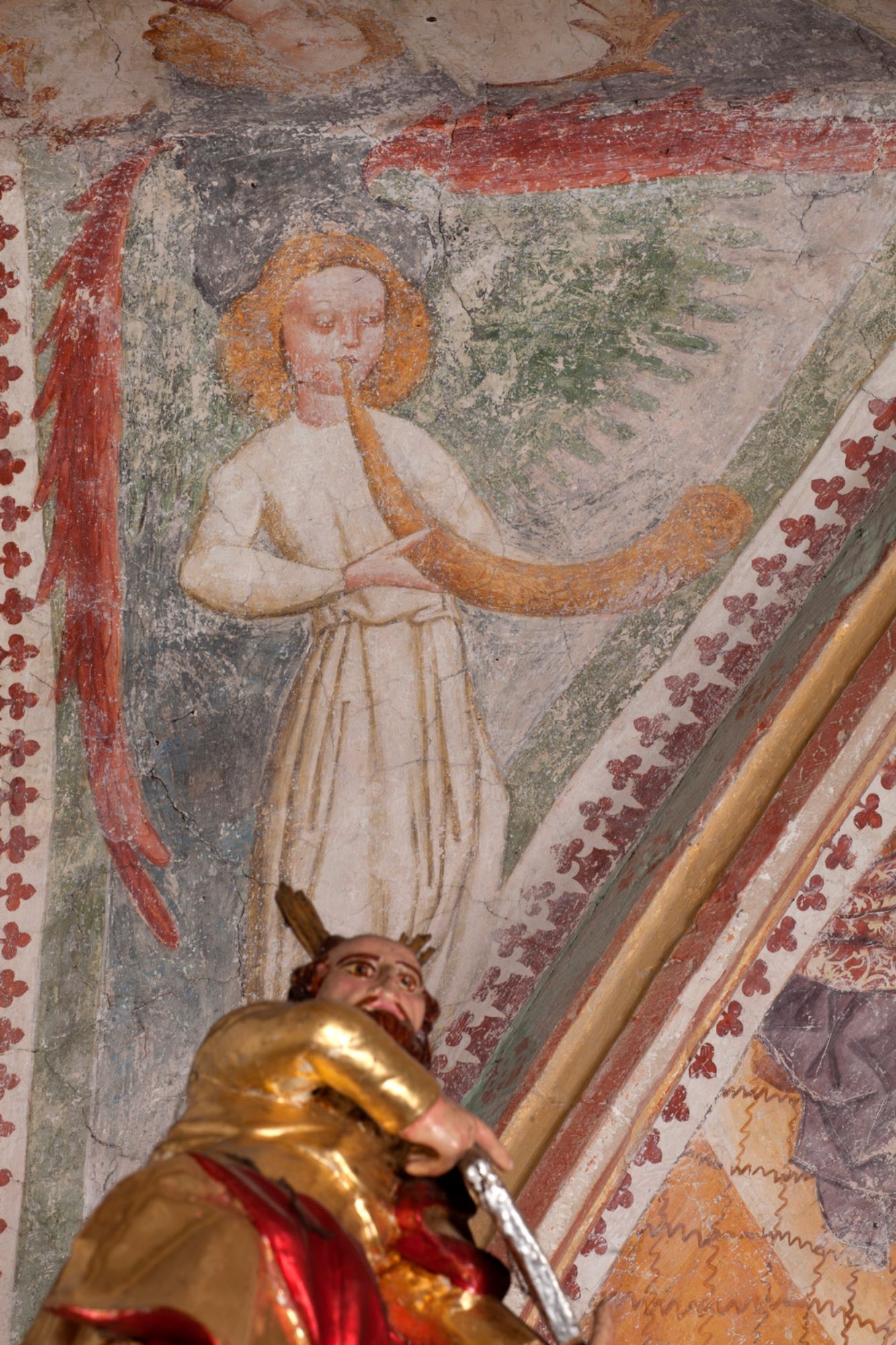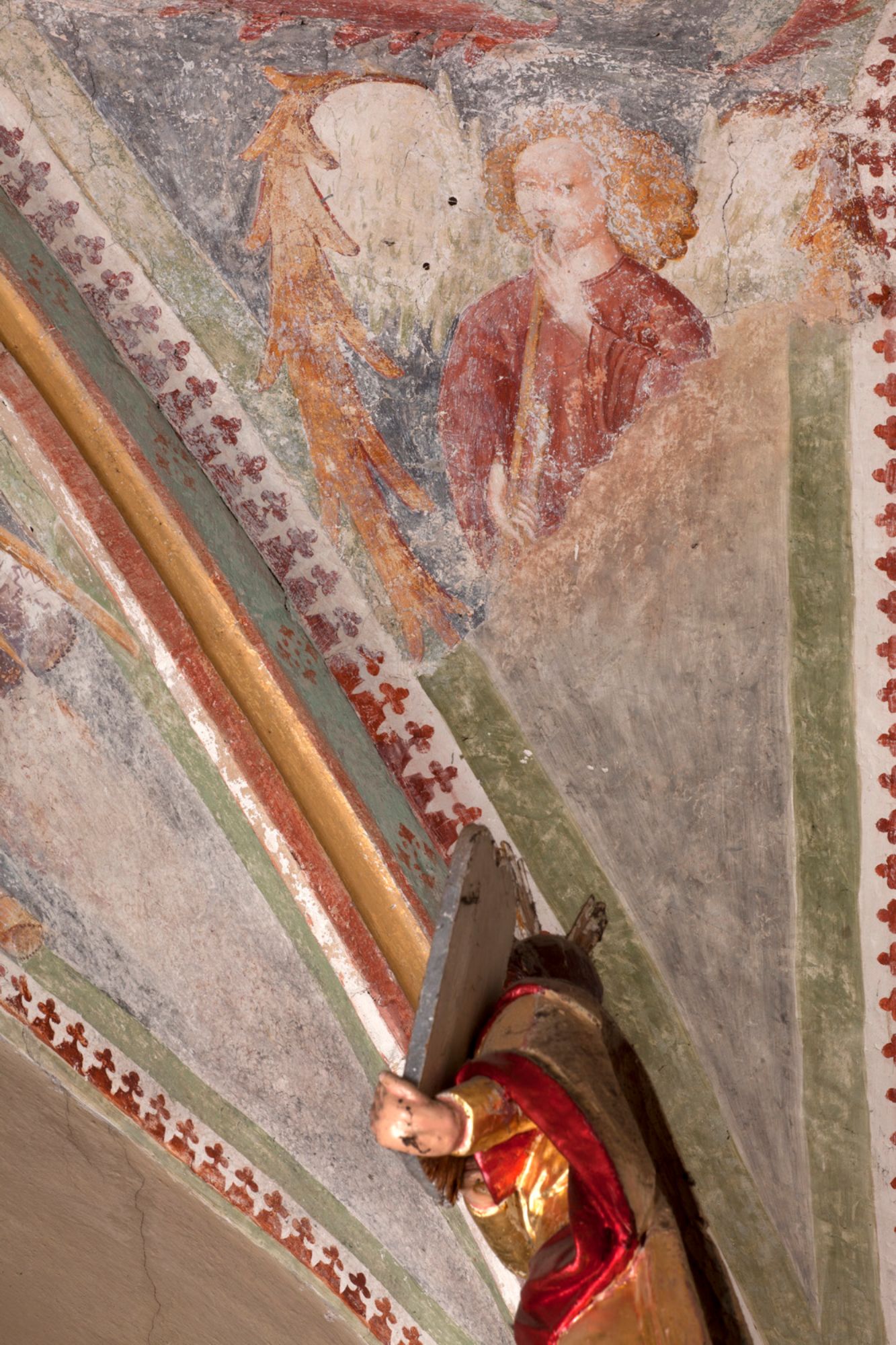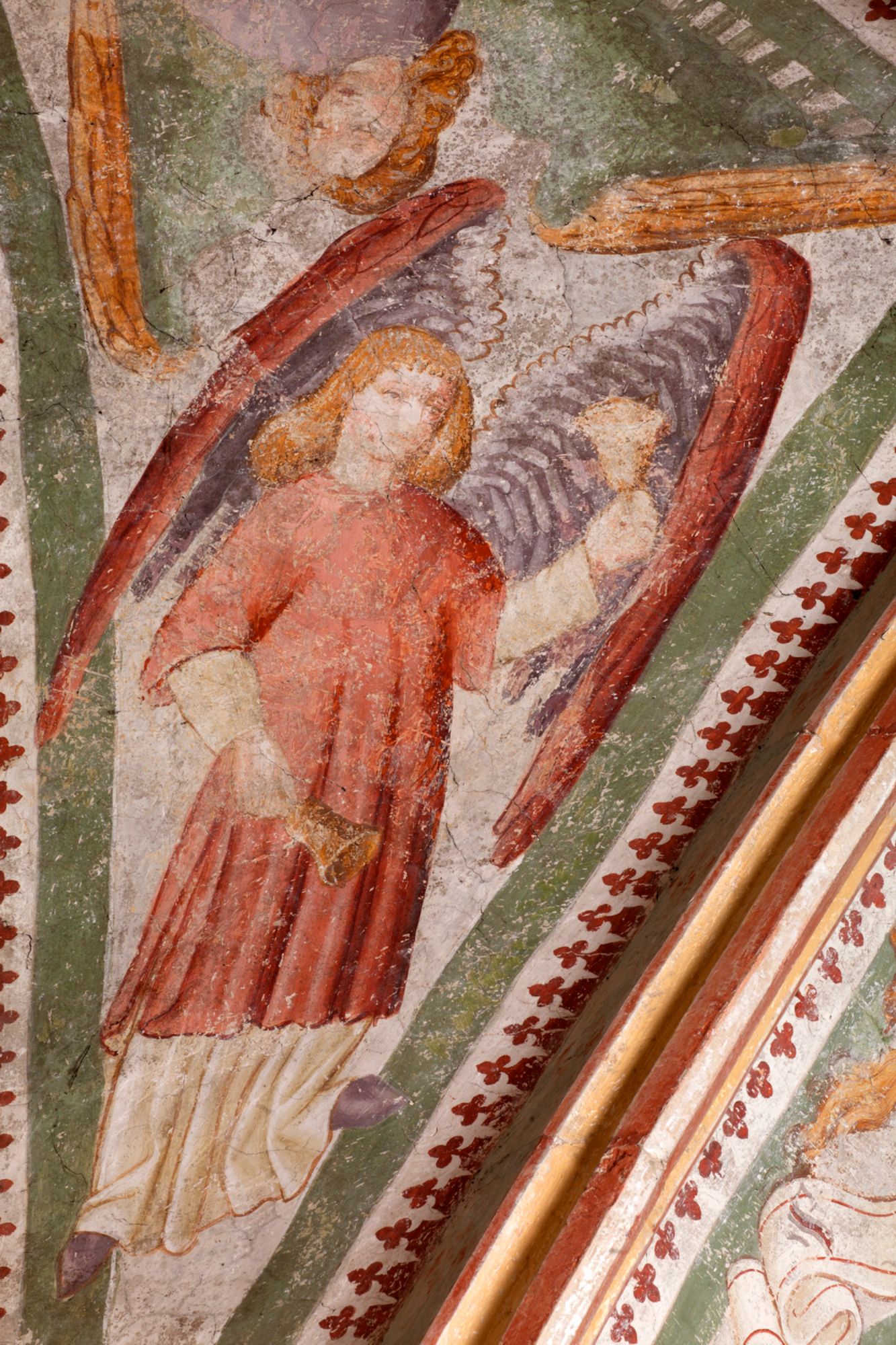Frescoes decorating the arch of the presbytery of St. John the Baptist’s Church in Mirna were discovered and restored in 1968. Their restorer, Izidor Mole, estimated that the paintings were “some of Slovenia’s finest and best-preserved frescoes”. Ten years later, his professional opinion was shared by a connoisseur of medieval painting, Dr Janez Höfler: “The male and female saints found in Mirna continue to mark the culmination of an idiosyncratic style of painting in Late Gothic art on Slovenian soil.” The free-standing representations of saints and musical angel figures surprise with a contemporary perception of the human figure, an understanding that follows the new realism in painting established – under the decisive influence of early German graphic art, especially Master E. S. – by early Netherlandish painters in the latter half of the 15th century. In 2002, Dr Janez Höfler identified the frescoes adorning the arch in Mirna as “a monument of European significance”.
In European fine art, angelic or heavenly liturgy first included angels without musical instruments. Subsequently, bands bearing lines from ecclesiastical hymns, as well as books, were added to the angels. It was only in the final development stage that the angels were represented holding sheet music and musical instruments. In the Mirna frescoes, the ‘angelic concert’ corresponds to the notions of the church fathers of ‘angelic’ or ‘heavenly’ music: the angels praising God with inscribed ribbons, the Instruments of the Passion and musical instruments are the agents of heavenly worship and heavenly liturgy. The Mirna frescoes feature twenty musician angels, of which sixteen are holding a musical instrument. According to Dr Janez Höfler, until Bolfgangus’s representation Slovenian wall painting had not yielded an example of such a coherent and large group of angels with so many different musical instruments.
The frescoes are – to the extent preserved – visually clear and transparent. The painting of musical instruments was executed with great precision, as was the depiction of their practical use. The frescoes cannot be seen as an irrefutable proof that the pictured instruments were actually practised in Slovenia. However, Bolfgangus’s representation of an angel with a dulcimer nevertheless indicates that the instrument was played locally. This is because at the time dulcimer was specific to Slovenian ethnic environment and was not known in other parts of Europe in this form. The musical instruments depicted in the Mirna frescoes undoubtedly lend an invaluable insight into medieval instruments and music-making.
Marko Kapus
(The representations of instruments held by musician angels include trumpet, bagpipes, tromba marina, dulcimer, rebec, clavichord, bells, harp, lute, dvojnice or the diple, portative organ, jingle bells, slide trumpet or sackbut and horn.)
